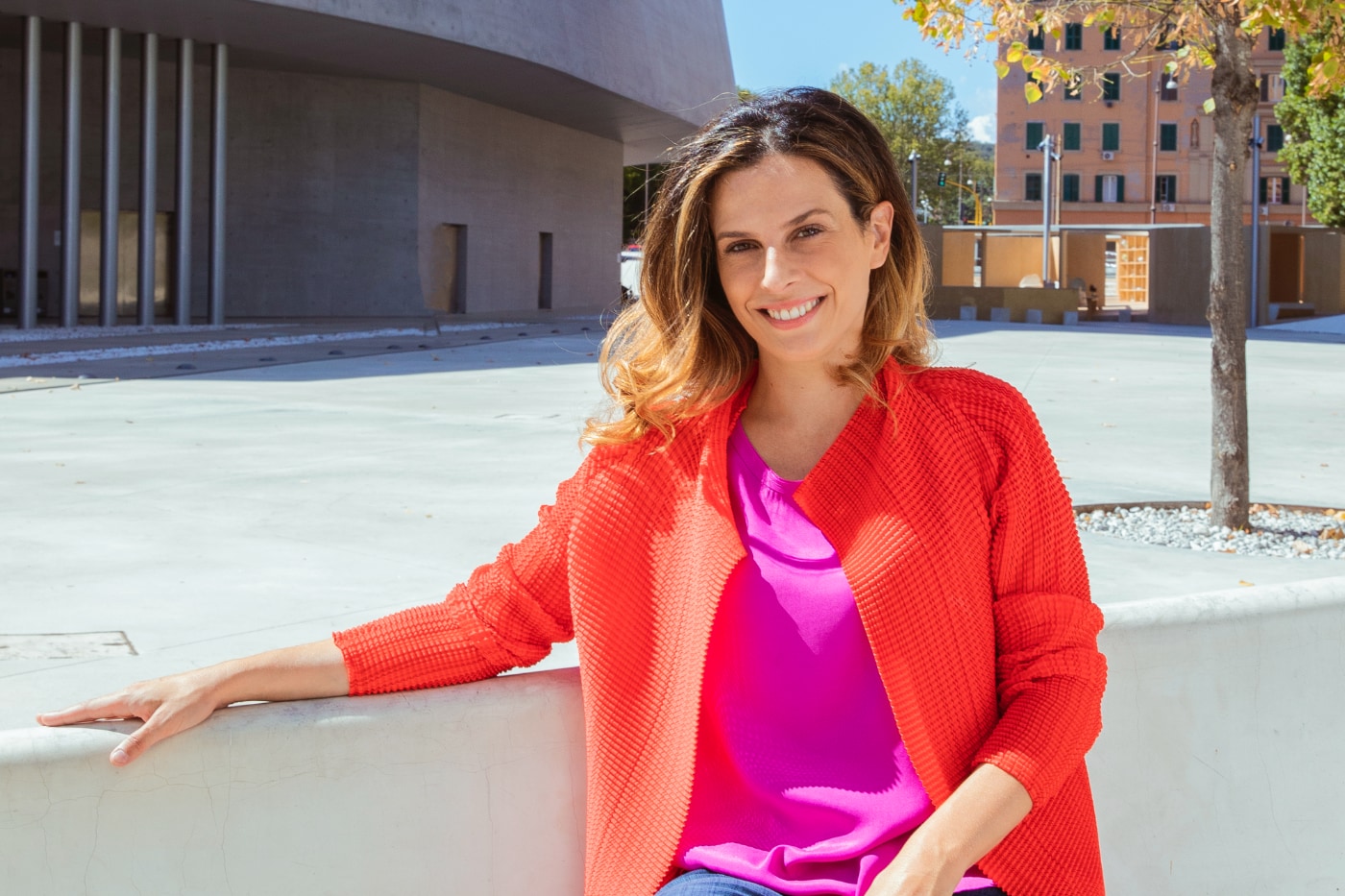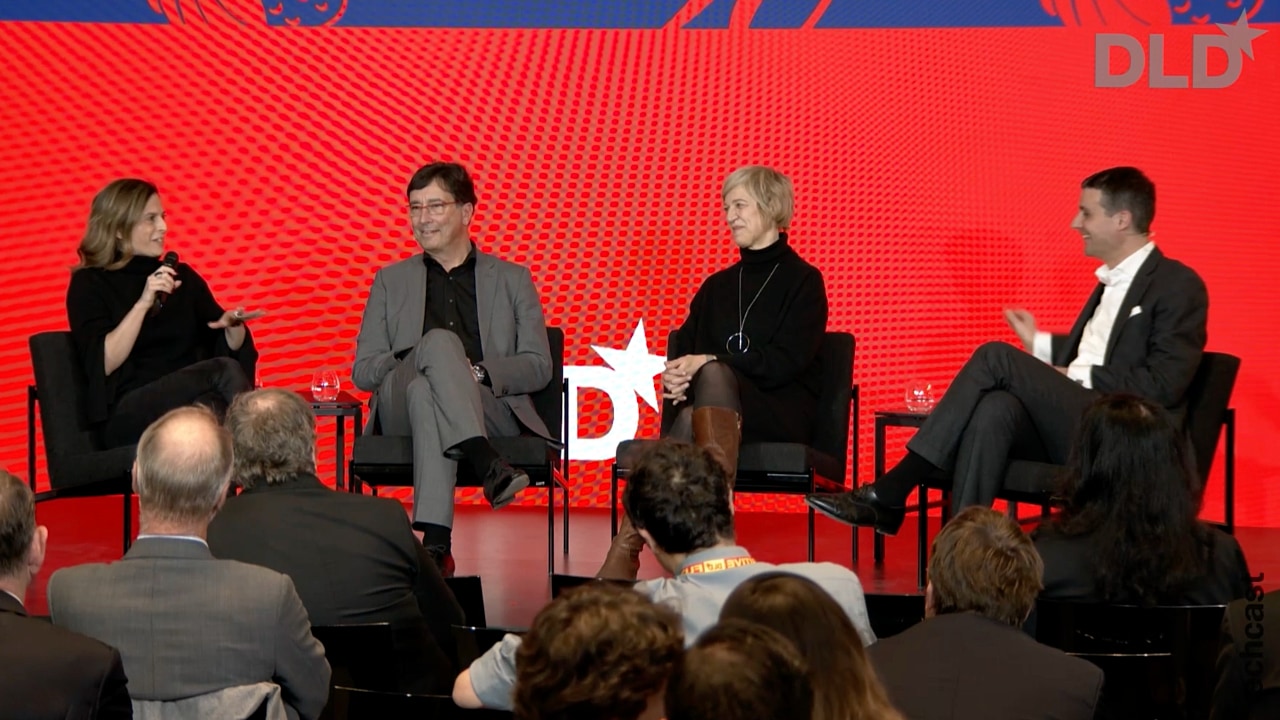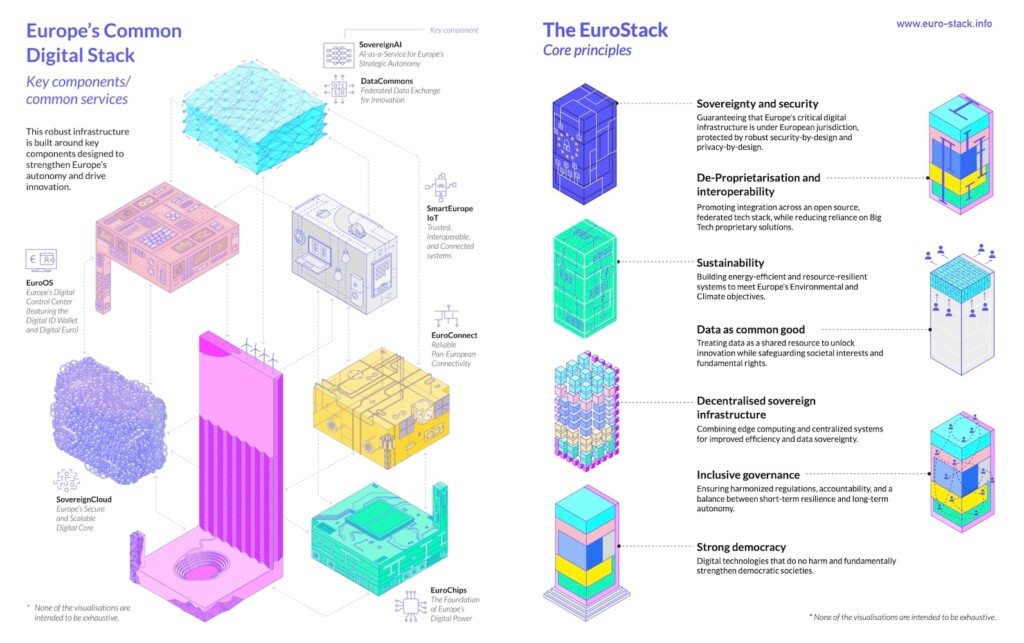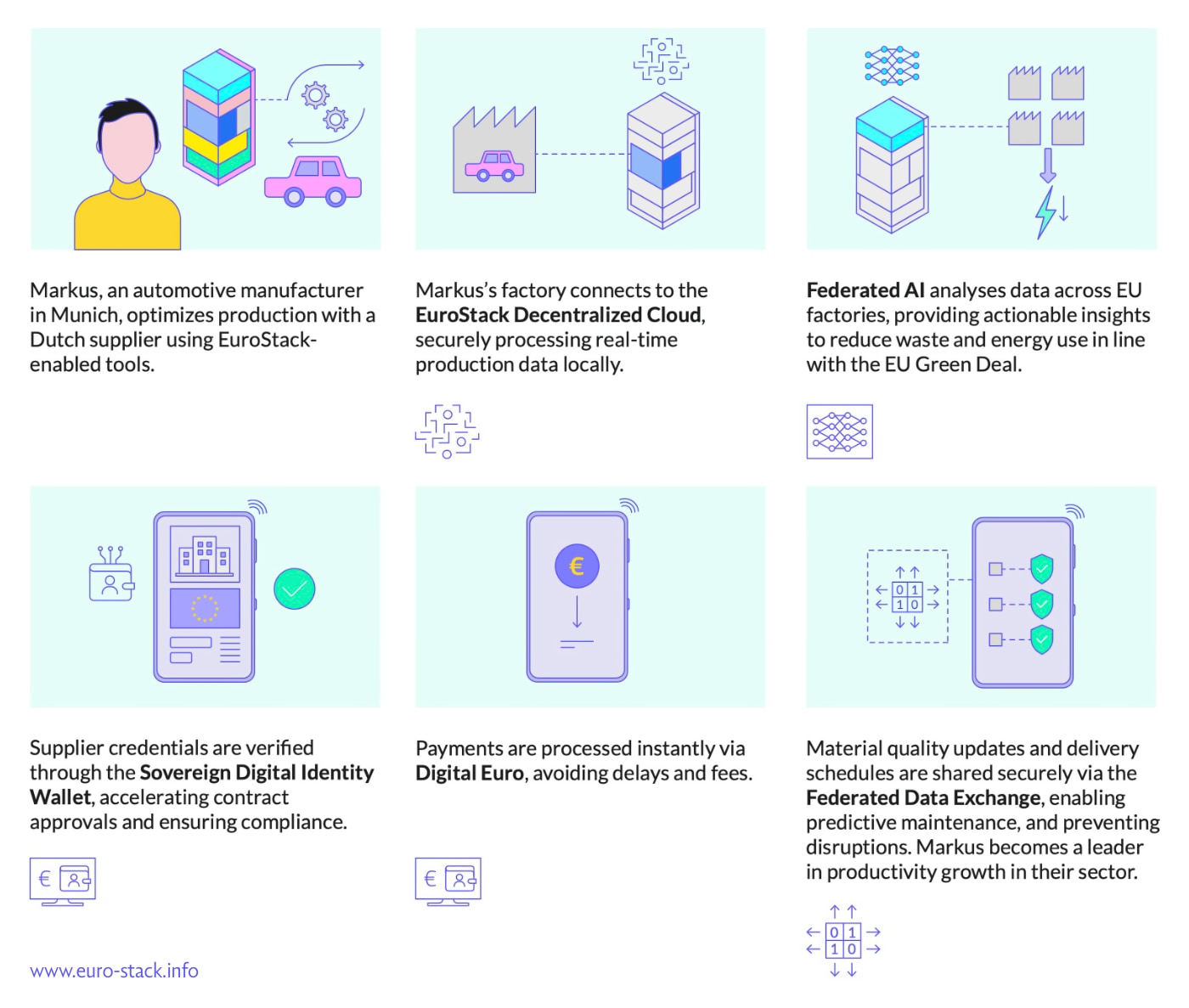
Meet the EuroStack: “The World Desperately Needs a Third Way”
Innovation economist Francesca Bria has developed a strategy for making Europe digitally autonomous. She explains how the EuroStack can boost the continent’s competitiveness.
A world of unhealthy dependencies – that’s what Francesca Bria sees when she looks at Europe’s position in the global digital economy. “We import 80% of digital services”, the Italian innovation economist says. 70% of cloud services are in the hands of just three American technology giants, while “China controls 80% of critical raw materials. It’s striking.”
And Europe? A continent of almost 450 million people with a combined economic output of $28 trillion annually – one of the wealthiest regions in the world, still an industrial superpower, yet highly reliant on technologies it doesn’t fully control.
“When you’re autonomous, you can choose”, Bria tells DLD. “You can choose what to buy. You can choose whether you’re partners, allies, semi-allies.” But when it comes to AI, cloud services or most kinds of semiconductors, “we’re not autonomous at the moment”, she adds. “Let’s face it.”
The Building Blocks of Independence
Francesca Bria made a name for herself as a pragmatic digital pioneer. As the Chief Digital Officer of Barcelona she developed smart city concepts that were later copied around the world. The EU Commission made her an ambassador for the New European Bauhaus initiative, and from early 2020 until the end of 2023 she led the Italian National Innovation Fund, CDP.
Now a fellow at the Mercator Foundation in Berlin, Bria came up with a plan to bring much-needed change to Europe’s digital dependency on others. Her concept goes by the name of EuroStack because in technology parlance, a “stack” describes the tools needed to fulfill a task. Similarly, Europe must put together a set of building blocks that form the foundation of future success, Bria believes.
Integrated approach: The EuroStack concept advocates autonomy in all vital aspects of the digital economy to strengthen European values and society.
“At the core of the EuroStack blueprint is a digitally sovereign Europe built on interconnected layers of advanced technologies, ranging from semiconductors and artificial intelligence (AI) to cloud computing and quantum systems”, Bria and her co-authors Paul Timmers and Fausto Gernone write in a new report, EuroStack – A European Alternative for Digital Sovereignty, commissioned by the Bertelsmann Stiftung and supported by CEPS, Mercator and the UCL Institute for Innovation and Public Purpose.
Common Technology, Shared Values
In some sectors, the EU did produce global tech leaders – think ASML (The Netherlands) and Infineon (Germany) in semiconductors; Nokia (Finland) and Ericsson (Sweden) in telecommunications; or SAP (Germany), Thales (France) and Bitdefender (Romania) in software solutions. Even in the fast-moving field of AI, which requires lots of capital, Europe has high-profile startups to show for, including Mistral (France), Aleph Alpha and DeepL (both Germany).
But when it comes to market share, they’re often dwarfed by their Asian or American competitors. In addition, there are some gaping holes in the current stack – most prominently in cloud computing, where many European companies are vitally dependent on Amazon, Google and Microsoft.
The EuroStack concept, Bria argues, offers an opportunity to not just fill these gaps, but to create a set of innovative products and services that are better than existing offers and also reflect European values, such as putting an emphasis on sustainability and data privacy.
“What is missing are European technological infrastructures which are secure, accountable and resilient”, Francesca Bria says.
The goal should be to create “a digital future that’s not the big tech oligarchy or the big tech Silicon Valley model, and it’s also not the big-state technology model that we see in China”, she argues. “I think the world really desperately needs a third way, another model that integrates technology into what kind of future we want.”
To her, that means “investing in green infrastructures, in education, health care – keeping Europe as Europe, but modernizing it, that’s what I want to see.”
The EuroStack in action: The illustration, taken from Bria’s report (PDF), shows how the different elements would work together in enabling a largely digitized supply-chain.
Putting the Concept Into Practice
Isolationism is explicitly not the goal of the EuroStack initiative, Francesca Bria emphasizes. “We’re going to have international relations, of course. We’re going to have trade, exchange goods and services.”
But wherever public money is spent, there should be a “Europe first policy” in procurement, she argues, along with her co-authors.
“We do have really good technology products in Europe“, Bria notes. But “we haven’t invested enough in the scaling of these products, in the adoption and in the usage.”
Currently, she notes, “the added value doesn’t stay in Europe. It goes abroad. And it creates all these billionaires that we see now running the world. Is this what we want? Because the impoverishment of the European industries, and impoverishment of the European people, has a very big long-term cost.”
European companies should have a vested interest in supporting the EuroStack concept, Bria believes – after all, they stand to gain from its implementation.
But she also stresses that corporate leaders play a crucial role in making the project a success. “It just can’t just be procurement. It can’t just be regulation”, Bria emphasizes. “It also has to be industrial leadership, technology leaders” who build the solutions ”and get them out there”.
How much would it cost to put the EuroStack into action? Some 300 billion euros over 10 years, Bria and her co-authors estimate. “This is actually a very small amount compared to the fact that, for example, Microsoft is investing $80 billion in AI infrastructure in just one year”, Bria says.
Ultimately, her hope is that “in 20 years’ time, we are not going to talk about what we need to do to revert things, but we’re going to talk about what we have done – how we succeeded.”



